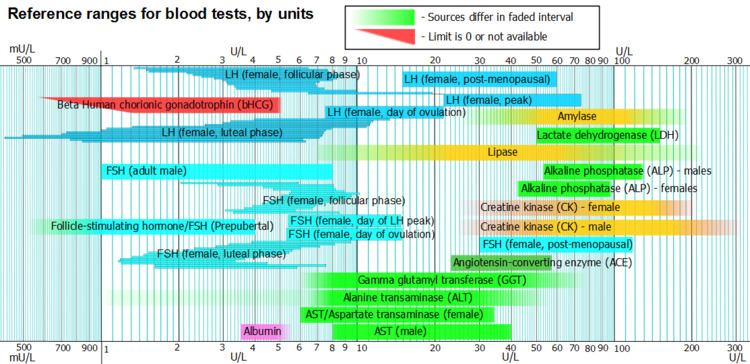LOINC 58260-1 | ||
 | ||
Cardiac markers are biomarkers measured to evaluate heart function. They are often discussed in the context of myocardial infarction, but other conditions can lead to an elevation in cardiac marker level.
Contents
Most of the early markers identified were enzymes, and as a result, the term "cardiac enzymes" is sometimes used. However, not all of the markers currently used are enzymes. For example, in formal usage, troponin would not be listed as a cardiac enzyme.
Applications of measurement
Measuring cardiac biomarkers can be a step toward making a diagnosis for a condition. Whereas cardiac imaging often confirms a diagnosis, simpler and less expensive cardiac biomarker measurements can advise a physician whether more complicated or invasive procedures are warranted. In many cases medical societies advise doctors to make biomarker measurements an initial testing strategy especially for patients at low risk of cardiac death.
Types
Types of cardiac markers include the following:
suPAR
suPAR, soluble urokinase-type plasminogen activator receptor, (NCBI Accession no. AAK31795) is the soluble form of uPAR. uPAR is a membrane bound receptor for uPA, otherwise known as urokinase. suPAR results from the cleavage and release of membrane-bound uPAR. suPAR concentration positively correlates to the activation level of the immune system and is present in plasma, urine, blood, serum, and cerebrospinal fluid. suPAR is a biomarker for activation of the inflammatory and immune systems. suPAR levels are positively correlated with pro-inflammatory biomarkers, such as tumor necrosis factor-α, leukocyte counts, and C-reactive protein. Elevated levels of suPAR are associated with increased risk of systemic inflammatory response syndrome (SIRS), cancer, Focal segmental glomerulosclerosis, cardiovascular disease, type 2 diabetes, infectious diseases, HIV, and mortality. suPARnostic is a prognostic test used to detect suPAR levels in blood plasma.
Many acute cardiac marker IVD products are targeted at nontraditional markets, e.g., the hospital ER instead of traditional hospital or clinical laboratory environments. Competition in the development of cardiac marker diagnostic products and their expansion into new markets is intense.
Recently, the intentional destruction of myocardium by alcohol septal ablation has led to the identification of additional potential markers.
Limitations
Depending on the marker, it can take between 2 and 24 hours for the level to increase in the blood. Additionally, determining the levels of cardiac markers in the laboratory - like many other lab measurements - takes substantial time. Cardiac markers are therefore not useful in diagnosing a myocardial infarction in the acute phase. The clinical presentation and results from an ECG are more appropriate in the acute situation.
However, in 2010, research at the Baylor College of Medicine revealed that, using diagnostic nanochips and a swab of the cheek, cardiac biomarker readings from saliva can, with the ECG readings, determine within minutes whether someone is likely to have had a heart attack.
